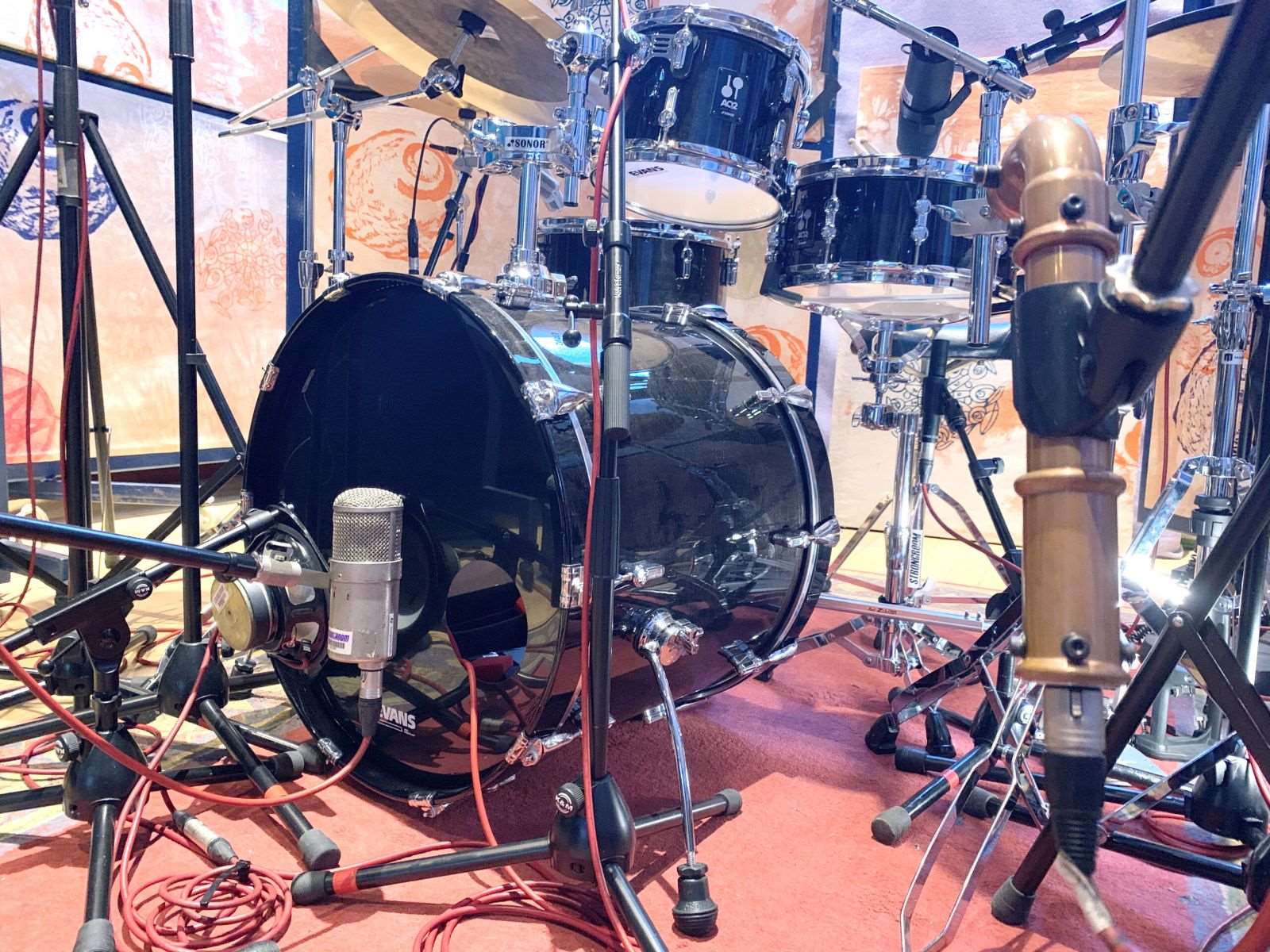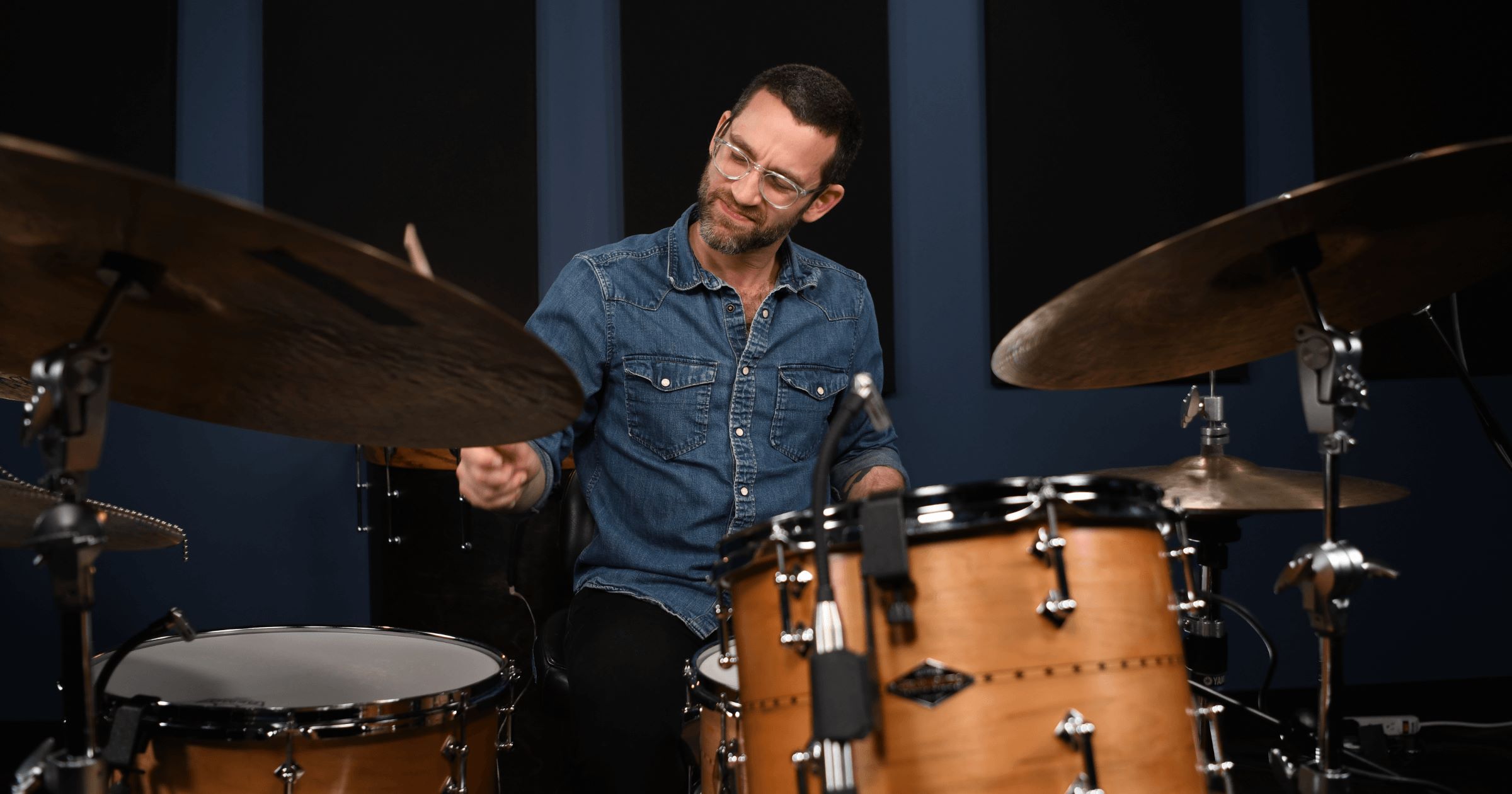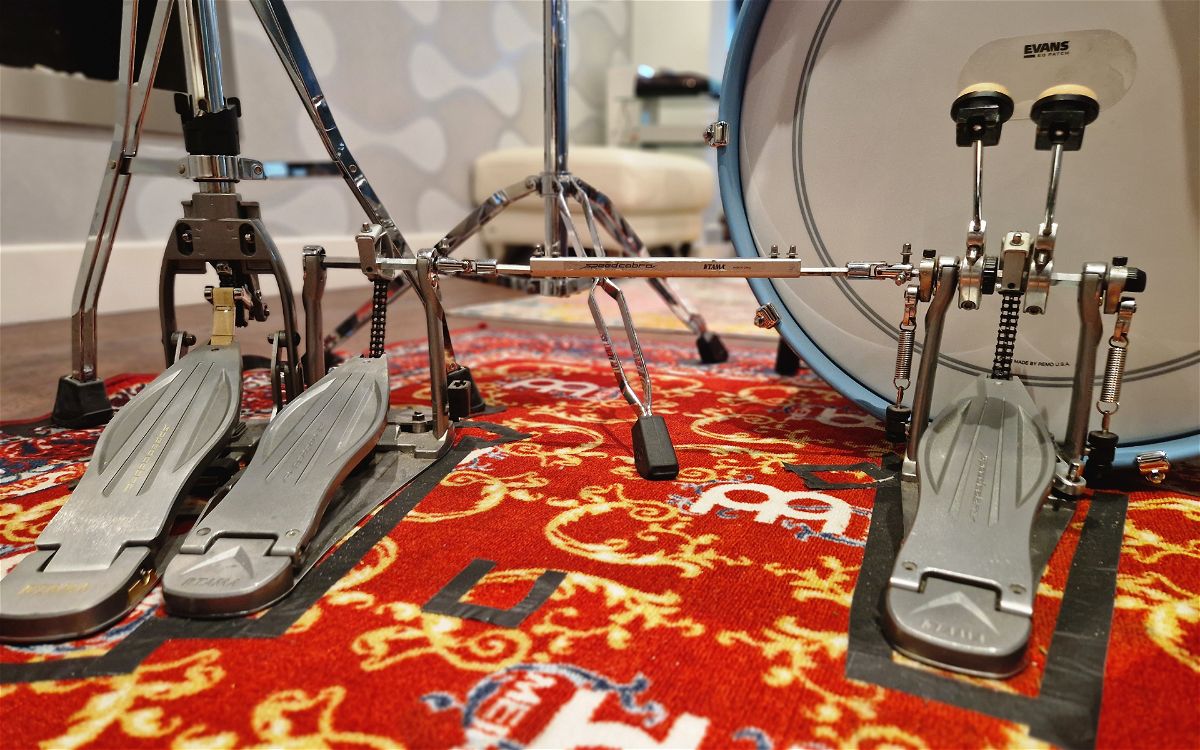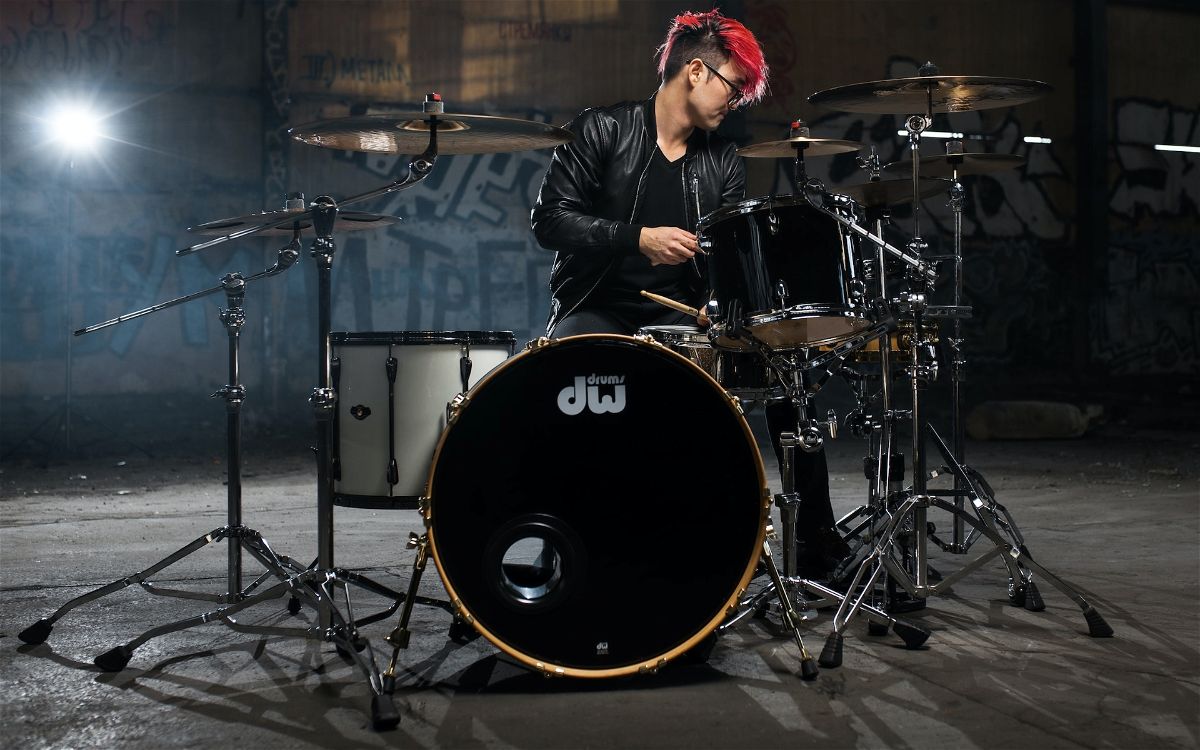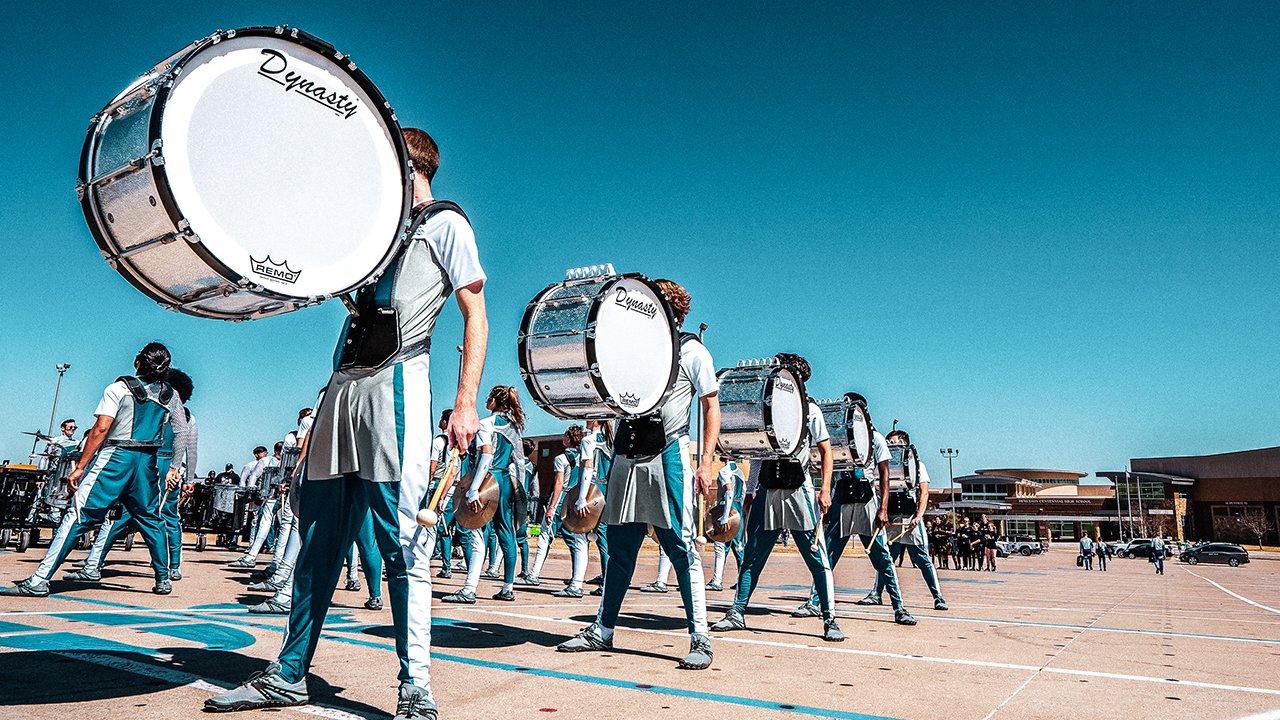Home>Instruments>Bass>How To Mic A Bass Drum
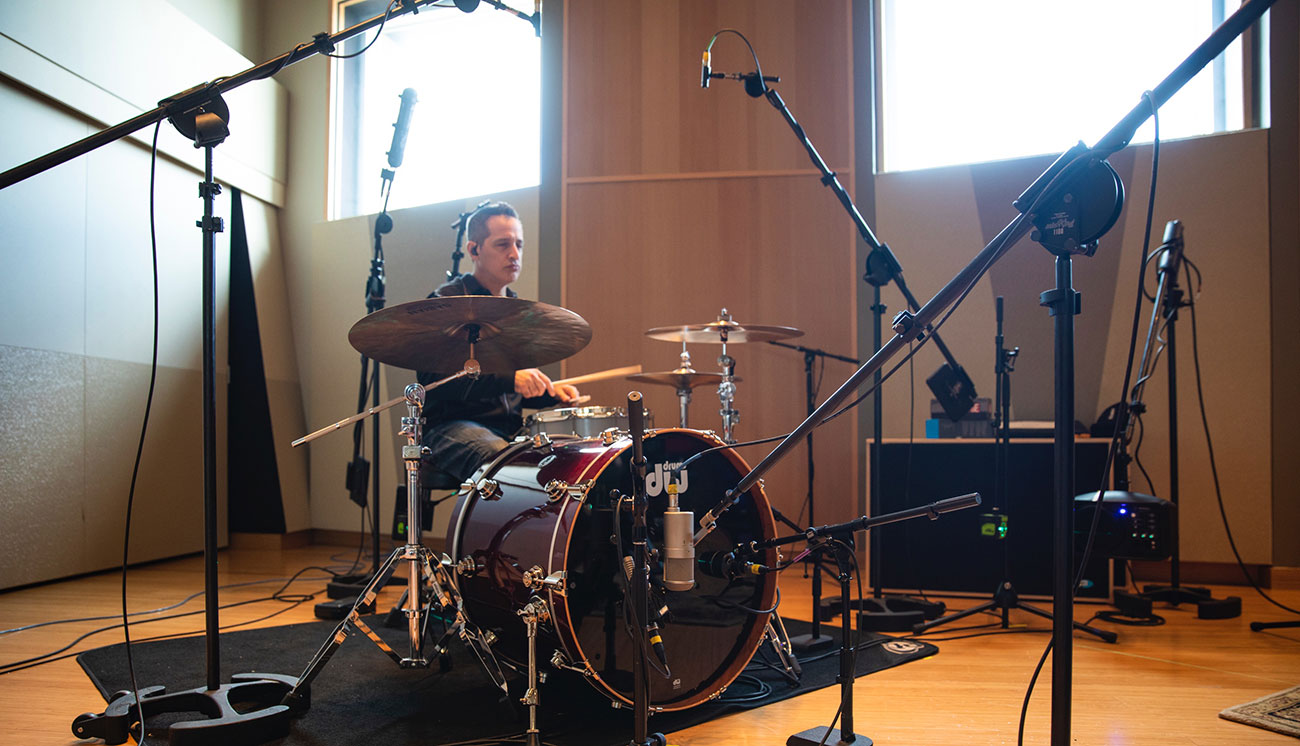

Bass
How To Mic A Bass Drum
Modified: February 16, 2024
Learn how to mic a bass drum for optimal sound quality. Get expert tips and techniques to capture the powerful low-end tones of your bass drum.
(Many of the links in this article redirect to a specific reviewed product. Your purchase of these products through affiliate links helps to generate commission for AudioLover.com, at no extra cost. Learn more)
Table of Contents
Introduction
The bass drum is a fundamental component of any drum set, providing the low-end punch and impact that drives the rhythmic foundation of a song. Capturing the full, powerful sound of a bass drum is essential for a well-balanced and impactful mix in recording and live sound situations. This is where proper microphone selection and placement come into play.
When it comes to miking a bass drum, there are various techniques and microphone choices to consider. Each approach brings its own unique tonal characteristics and sonic qualities to the mix. In this article, we will explore the different types of microphones commonly used for miking bass drums, as well as the various placement techniques that can be employed to achieve the desired sound.
Whether you’re a recording engineer, live sound technician, or a drummer looking to mic your own bass drum, understanding the ins and outs of bass drum miking will help you capture the best sound possible. So, let’s dive in and explore the world of miking the mighty bass drum!
Types of Microphones for Bass Drums
When it comes to miking a bass drum, there are several types of microphones to choose from. Each type has its own characteristics and can yield different results in terms of sound capture. Here are the most common types of microphones used for miking bass drums:
- Dynamic Microphones: Dynamic microphones are the most popular choice for miking bass drums. They are known for their durability and ability to handle high sound pressure levels. Dynamic microphones capture the punch and low-end frequencies of the bass drum with great accuracy. Some popular dynamic microphones for bass drums include the Shure SM57 and the Audix D6.
- Condenser Microphones: Condenser microphones are more sensitive and offer a wider frequency response compared to dynamic microphones. They can capture the subtler nuances and the natural resonance of the bass drum. Condenser microphones are commonly used in recording studios where capturing every detail is crucial. The AKG C214 and the Neumann U87 are some examples of condenser microphones that are often used for miking bass drums.
- Ribbon Microphones: Ribbon microphones are known for their warm and vintage sound. They have a delicate ribbon element that can capture the smoothness and depth of the bass drum. Ribbon microphones are often used in conjunction with other microphones to add a different tonal character to the overall sound. The Royer R-121 and the Coles 4038 are popular ribbon microphones for miking bass drums.
Each type of microphone has its own unique characteristics and sound qualities. Experimenting with different types of microphones can help you find the one that suits your preference and the desired sound for your bass drum.
Placement Techniques
The placement of the microphone(s) plays a crucial role in capturing the best sound from a bass drum. The technique used will depend on factors such as the desired sound, the type of microphone(s) being used, and the room acoustics. Here are some common placement techniques for miking a bass drum:
- Close-Miking the Bass Drum: Close-miking involves placing the microphone(s) very close to the bass drum. This technique captures the direct sound of the drum, emphasizing the attack and low-end frequencies. A dynamic microphone, such as the Shure SM57 or Audix D6, is often positioned slightly off-center, halfway into the bass drum’s port hole, for optimal capture of the beater impact. Placing a foam or rubber pad between the microphone and the drumhead can help reduce unwanted vibrations and noise.
- Overhead Miking the Bass Drum: Overhead miking involves positioning a microphone(s) above the bass drum, typically in a stereo configuration. This technique captures a broader sound, including the natural resonance and sustain of the drum. Condenser microphones, like the AKG C214 or Neumann U87, are commonly used for overhead placement. The distance from the drum is usually around 1-2 feet, depending on the desired balance between the direct sound and the room ambiance.
- Blending Multiple Microphones: To achieve a well-rounded and full-bodied sound, it is common to use a combination of close-miking and overhead miking. This allows for capturing both the attack and low-end thump of the bass drum, as well as the natural reverb and room sound. By blending the signals from different microphones, you can create a more balanced and customized sound for your mix.
Experimentation is key when it comes to finding the optimal placement technique for miking a bass drum. Fine-tuning the microphone position and adjusting distances can help you achieve the desired sound and capture the unique characteristics of your bass drum.
Close-Miking the Bass Drum
Close-miking is a popular technique for capturing the direct sound and attack of the bass drum. By placing the microphone(s) in close proximity to the drum, you can emphasize the low-end frequencies and capture the impact of the beater hitting the drumhead. Here are some tips for close-miking the bass drum:
- Positioning the Microphone: When close-miking the bass drum, position the microphone slightly off-center and halfway into the bass drum’s port hole. This placement allows for optimal capture of the beater impact and the low-end thump. Experiment with different positions to find the sweet spot that delivers the desired sound.
- Choosing the Right Microphone: Dynamic microphones like the Shure SM57 or Audix D6 are often the go-to choice for close-miking the bass drum. These microphones are designed to handle high sound pressure levels and capture the punch and low-end frequencies accurately.
- Using a Foam or Rubber Pad: To reduce unwanted vibration and noise, place a foam or rubber pad between the microphone and the drumhead. This helps isolate the microphone from the drum’s resonant vibrations, resulting in a cleaner sound capture.
- Adjusting the Distance: Fine-tune the distance between the microphone and the drumhead to achieve the desired balance between attack and sustain. Positioning the microphone too close to the drumhead will capture more attack, while moving it slightly farther away will capture more of the drum’s natural resonance.
- Checking for Phase Issues: When using multiple close-miking microphones on the bass drum, it’s essential to check for any phase issues. Align the microphones so that their waveforms reinforce each other rather than canceling each other out. Use your ears and adjust the positioning if necessary.
Remember, close-miking allows for capturing the immediate impact and low-end power of the bass drum. It’s a technique that requires careful positioning and experimentation to achieve the desired sound balance for your mix.
Overhead Miking the Bass Drum
Overhead miking the bass drum involves positioning a microphone(s) above the drum to capture the overall sound, including its natural resonance and sustain. This technique adds depth and room ambience to the captured sound. Here are some tips for overhead miking the bass drum:
- Microphone Placement: Position the microphone(s) above the bass drum, usually in a stereo configuration. Aim for a distance of around 1-2 feet from the drum, depending on the desired balance between the direct sound and the room ambiance. Experiment with different angles and distances to find the sweet spot that captures the desired sound.
- Choosing the Right Microphone: Condenser microphones are commonly used for overhead miking due to their wide frequency response and ability to capture finer details. Microphones like the AKG C214 or Neumann U87 are great options for capturing the full range of the bass drum’s sound.
- Adjusting the Polar Pattern: Condenser microphones typically have selectable polar patterns, such as cardioid, omni, and figure-8. Cardioid patterns are commonly used for overhead miking to capture the sound coming directly from the drum while minimizing side and rear pickup. Experiment with different polar patterns to achieve the desired balance and capture the desired sound characteristics.
- Checking for Phase Issues: When using multiple overhead microphones, it’s crucial to check for any phase issues. Ensure that the microphones are in phase with each other to avoid wave cancellation. Listen closely to the sound and adjust the distance and positioning if necessary.
- Blending with Close-Miking: To achieve a balanced and well-rounded sound, it’s common to blend the overhead microphones with close-miking microphones. This combination allows for capturing both the attack and low-end thump of the bass drum, as well as the natural resonance and room sound.
Overhead miking provides a wider perspective of the bass drum sound, capturing its natural resonance and adding depth to the mix. Experiment with different microphone placements and polar patterns to achieve the desired balance and capture the unique characteristics of your bass drum.
Blending Multiple Microphones
Blending multiple microphones is a common technique used to achieve a well-balanced and full-bodied sound when miking a bass drum. By combining the signals from different microphones, you can capture the various tonal characteristics and create a more customized sound for your mix. Here are some tips for blending multiple microphones:
- Close-Miking and Overhead Combination: One common approach is to blend the close-miking and overhead miking techniques. This combination allows you to capture both the attack and low-end thump from the close-miking microphone(s), as well as the natural resonance and room sound from the overhead microphone(s). Experiment with the relative levels of each microphone to achieve the desired balance.
- Phase Coherence: When using multiple microphones, it’s crucial to ensure phase coherence. This means making sure that all the microphones are in phase with each other to avoid phase cancellation. One way to check for phase coherence is to listen to the combined sound of the microphones and adjust their positioning if any phase-related issues arise.
- Equalization and Processing: Each microphone may capture different tonal qualities, which may require some equalization and processing to achieve a cohesive sound. Use equalization to shape the tonal balance and compression to control dynamics and add sustain if desired. Be mindful of not over-processing the sound and retain the natural characteristics of the bass drum.
- Experiment with Different Combinations: Don’t be afraid to try different combinations of microphones to find the best blend for your bass drum sound. You can mix and match different close-miking and overhead microphones, or even experiment with additional room microphones for a more spacious sound. Trust your ears and continue adjusting until you achieve the desired tone.
- Monitoring and Adjusting: Continuously monitor and adjust the levels and balance of the multiple microphones in real-time while listening to the overall mix. This will ensure that the bass drum sound sits well within the context of the entire drum kit and the rest of the instruments in the mix.
Blending multiple microphones requires careful attention to maintaining phase coherence and adjusting the relative levels and processing to achieve the desired sound. By experimenting with different combinations and fine-tuning the blend, you can create a balanced and impactful bass drum sound that fits perfectly in your mix.
Tips for Achieving a Balanced Bass Drum Sound
Achieving a balanced bass drum sound is essential for a well-rounded and impactful drum mix. Here are some tips to help you achieve a balanced bass drum sound:
- Tune the Bass Drum: Before you begin miking the bass drum, ensure that it is properly tuned. Experiment with different tensions on the drumheads to find the desired tone. A well-tuned bass drum will provide a solid foundation for the rest of the drum mix.
- Consider the Song or Genre: The sound of the bass drum should complement the style of music you’re working with. For heavy rock or metal, a punchier and more aggressive sound may be desired. For jazz or softer genres, a more rounded and controlled sound may be preferred. Consider the song or genre and adjust your miking and processing techniques accordingly.
- Listen and Adjust: Listen carefully to the sound of the bass drum in the context of the overall mix. Continuously make adjustments to the microphone placement, levels, and processing until you achieve the desired balance and impact. Trust your ears and make subtle tweaks to enhance the sound.
- Pay Attention to the Attack and Sustain: The attack and sustain of the bass drum are crucial for its impact. Adjust the close-miking microphone placement and the blending of multiple microphones to capture the desired balance between attack and sustain. Use processing techniques like equalization and compression to shape the dynamics and sustain of the bass drum sound.
- Consider Room Acoustics: The room in which you record or mix the bass drum will have an impact on its sound. If you are in a small, reflective room, be mindful of potential unwanted reflections. If you are in a larger, more reverberant space, take advantage of the natural room ambience to enhance the sound of the bass drum.
- Balance with Other Instruments: Ensure that the bass drum works well with the other instruments in the mix. Adjust the relative levels and EQ of the bass drum to make sure it sits well within the overall balance. Be careful not to overpower or be overshadowed by other instruments in the mix.
- Reference Professional Recordings: A great way to develop your sense of what a balanced bass drum should sound like is to listen to professional recordings in your chosen style. Pay attention to the bass drum sound and try to emulate those qualities in your own recording or mix. Use these reference tracks as a guide and source of inspiration.
Remember, achieving a balanced bass drum sound is a combination of careful microphone placement, processing techniques, and a keen ear for detail. With practice and experimentation, you’ll be able to capture and enhance the impact and power of the bass drum in your recordings and mixes.
Conclusion
Miking a bass drum is a fundamental aspect of capturing the power and impact of the instrument in a recording or live sound setting. By understanding the various microphone types available and the different placement techniques, you can achieve a well-balanced and professional sound for your bass drum.
When miking the bass drum, consider the characteristics of dynamic, condenser, and ribbon microphones, and choose the one that best suits your desired sound. Experiment with close-miking techniques to capture the direct attack and low-end frequencies, or use overhead miking to capture the natural resonance of the drum. Blending multiple microphones can add depth and complexity to the sound, and it’s important to pay attention to phase coherence and adjust the relative levels and processing to achieve a cohesive blend.
Additionally, tuning the bass drum, considering the song or genre, and monitoring the balance with other instruments are crucial factors in achieving a balanced bass drum sound. Remember to trust your ears and make subtle adjustments as needed to create the desired impact and sustain for the bass drum in your mix.
By following these techniques and tips, you can effectively mic your bass drum and capture its true essence in your recordings or live performances. Remember that each situation is unique, and experimentation is key to finding the perfect sound for your bass drum. With practice and experience, you’ll be able to consistently achieve a powerful and balanced bass drum sound that enhances your overall drum mix.


